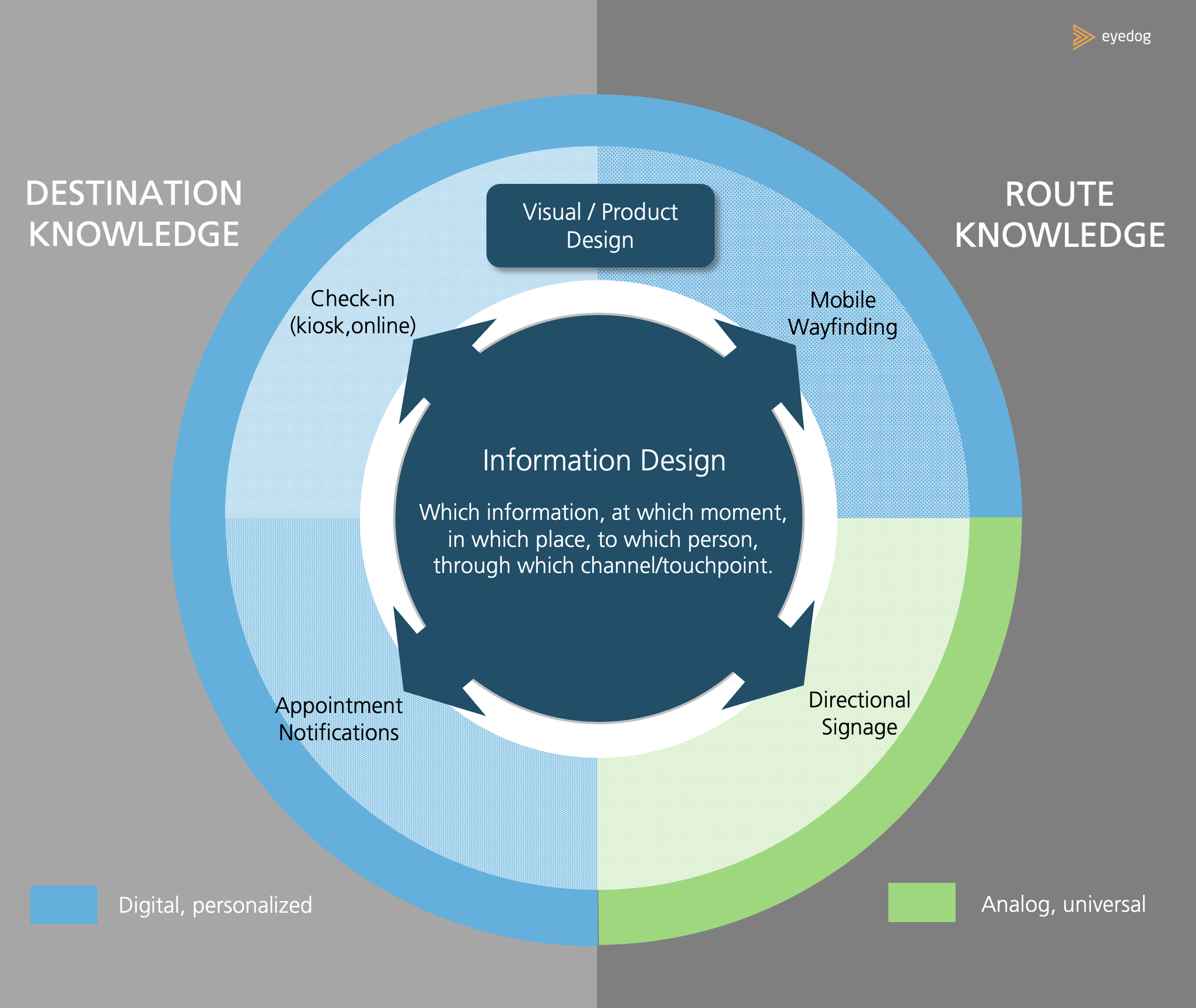Designing for Patient Wayfinding is #phygital and #digitalfirst
It’s mind-boggling to see that the majority of hospitals are still stuck in 1988 when it comes to Patient Wayfinding...
Today's patients expect a retail-like experience, characterized by effective, personalized, and empathetic communication. In virtually every survey, patients consistently express the need for better information regarding the physical patient journey.
Patient wayfinding is #phygital and #digitalfirst. The goal is to provide information that effectively compensates for spatial knowledge deficits. This means that destination information should be digital and always personalized. Navigation, or route information, should be both digital and analog: digital information is personalized, while analog route information is universal and designed for the largest common denominator. Survey information (thus maps) is a no-go.
Patient wayfinding is so much more than just a few signs. Signs are tools from the past that are only truly effective when supported by proper information design—something that is almost always the main issue. This includes avoiding medical jargon, ensuring that every location is accessible from any decision point, and limiting directional information to no more than four items to support the primary process. Of the 250+ hospitals I have visited, I’ve seen only a handful that meet these criteria.
It also includes coding locations, integrating them as a digital layer in your EMR (Electronic Medical Record) or DFD, and intelligently linking them to appointment codes in the EMR and mobile solutions.
Done.
Unfortunately, the reality is much more stubborn...

